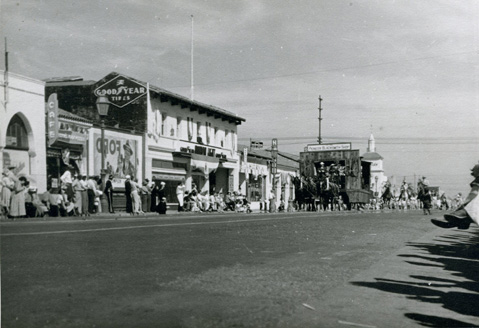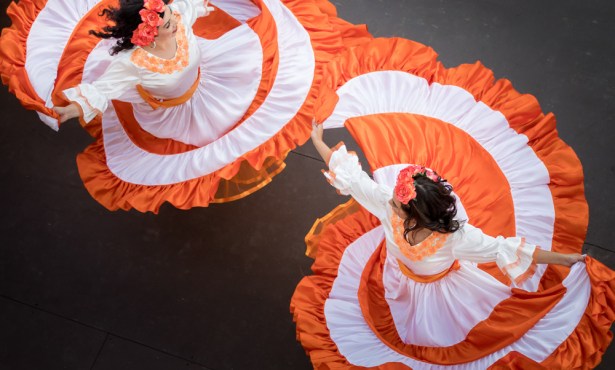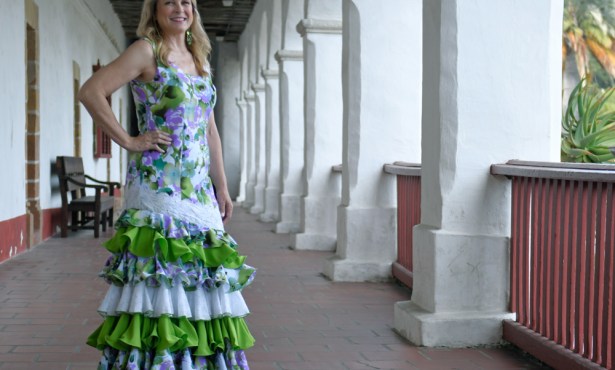Fiesta Memories: Josefa Erro

I never met my only Spanish-speaking great-grandmother, Josefa Erro, because she died in 1925, six months after the first Fiesta. But as a kid in the 1960s, I watched carefully for her in the parade every year.
My grandmother ensured we arrived early to find a place in the shade. She created a contest — who would first spot the Blacksmith Shop float coming down the street? A real blacksmith working his real forge with a real fire, pulled by mules — right there on State Street! She’d exchange waves with Jim Smith, the iconic Goleta blacksmith. She knew him because he’d crafted bean cutters, branding irons, and other farming tools for her coastal ranch at Refugio, where for decades her husband relied on horse-drawn implements and summer’s fog drip for his dry-farmed lima beans and tomatoes.
We, too, stood up to wave and to see where Jim Smith had branded the hind end of his wooden float with our family’s cattle brand, the conjoined initials “JE” — for our great-grandmother, Josefa Erro. That burnt JE brand was the parade’s highlight for us.
Ninety years after she died, Josefa’s traditions continue in our lives. I live in a simple board-and-batten ranch house she and her Basque husband, Miguel, built over 100 years ago on the leeward side of Refugio Pass. Their portraits watch down on the front porch. The old JE branding iron Jim Smith made hangs under Josefa’s portrait — agrarian idolatry? We’ve always had Josefa’s egg enchiladas at cattle roundups, made the old Californio way, with flour tortillas and sliced hard-boiled eggs. My mother still sings the same Spanish folk songs that Josefa sang in the same ranch kitchen in which we make her enchiladas for family fiestas.
My mother taught us to be proud of our mixed ethnicity and to always — always — check the “Hispanic” box on census-like forms so we’d remember Josefa’s heritage, a legacy emulating the Santa Barbara story which Fiesta celebrates.
Josefa’s life telescopes Santa Barbara history. She was born here in 1859; her maternal grandparents, Josefa Guevara y Cota and Leandro Gonzales, were born here in 1805 and 1792. Their parents were born in the mid-1700s in the then-Spanish provinces of Sinaloa, Sonora, Querétaro, and Baja California — in fact, most of the original colonists came to California in the 18th century from Sonora and Sinaloa, in today’s northwest Mexico. One of Josefa’s own great-grandmothers left Álamos, Sonora, in February 1781 to walk to Santa Barbara with the Rivera expedition.
While mission church records refer to Josefa’s forbears as mulata, negro, mestizo, india, and español, modern DNA research suggests that most of her maternal makeup was from indigenous people, much of it likely from the Cáhita, who live on the Sonoran and Sinaloan coastal plains.
I don’t know how Josefa would identify her ethnicity today nor how our racially politicized society would construct her multiple “races.” Our family has white skin now, and we no longer speak a Cáhitan language or even Spanish. But we still live in Josefa’s house, hear her songs, eat her enchiladas, and pay our JE brand registration fees to the Bureau of Livestock Identification. Our multiple and dynamic ethnicities illustrate Santa Barbara’s diverse heritage — and we are proud to check “Hispanic” on census forms.



